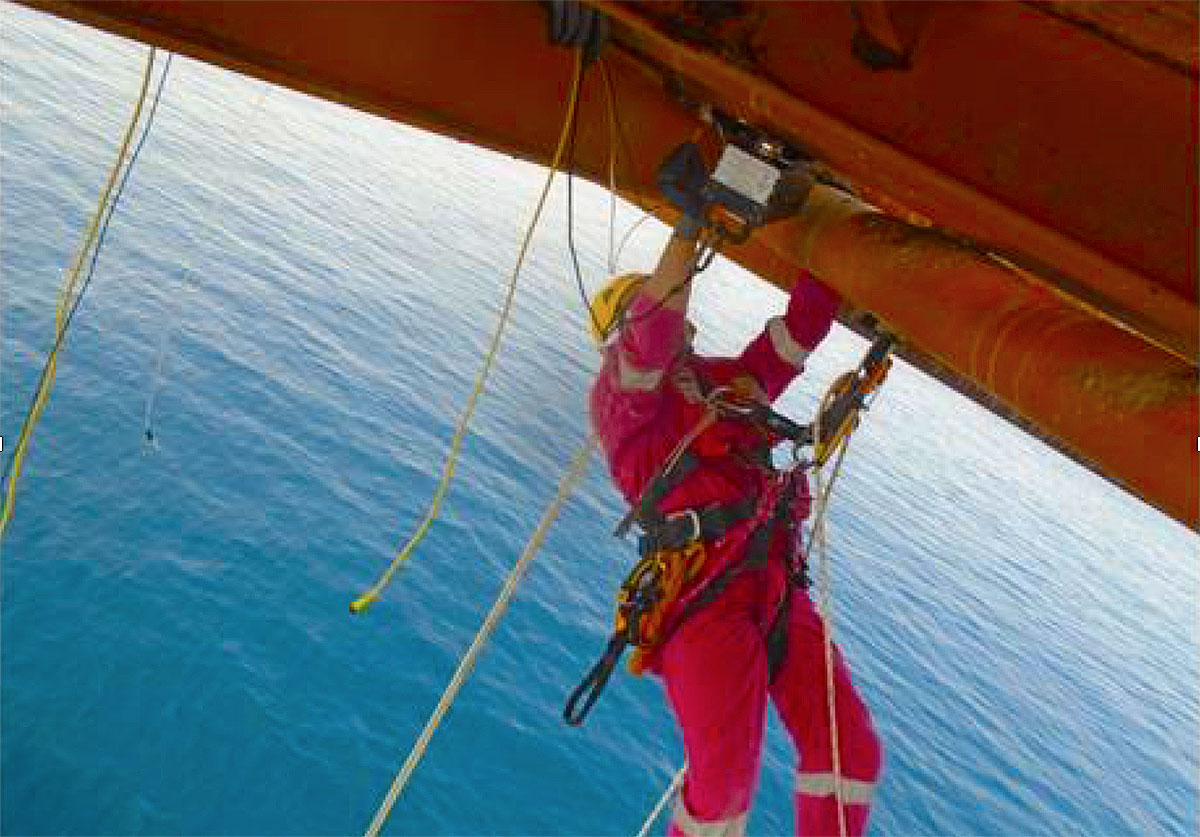

In today’s competitive environment, Oil & Gas operators must optimise production by limiting facility downtime.
The key to reducing downtime and achieving greater reliability is adopting new and advanced inspection techniques.
In recent years, a number of tools have emerged and DP is constantly seeking for new available technologies in order to maximise the effectiveness of each of the scheduled inspection activities. Some of the techniques currently used on board DP installation include the following:
Carrying out flare tip or platform bridge inspections would normally involve shutting the complex for multiple weeks. The main advantage of ROAVs is its displacement speed and ability to capture large amounts of inspection information quickly. The use of ROAVs is particularly helpful in more harsh or challenging environment.

Corrosion mapping is a non-intrusive technique which maps equipment wall thickness using ultrasonic technique. Corrosion mapping is widely used in Dubai Petroleum for the in-service detection and characterization of corrosion in pipes and vessels. Variations in material thickness due to internal corrosion can be identified and graphically portrayed as an image. The data is stored on a computer and may be colour coded to show differences in thickness readings. Corrosion is mapped by using zero degree ultrasonic probes, an Eddy current array and/or Time of flight detection methods.
Rope access is a safe technique that allows trained and certified inspectors to access difficult-to-reach locations without the use of scaffolding and temporary work platform. Combined to advanced inspection techniques such as M-Skip (technique used to inspect components rendered inaccessible due to the presence of obstructions, such as support beams), rope access has the advantage to propose cost and time effective solutions for the inspection of non-accessible equipment.

Dubai Petroleum was amongst the first in the region to implement the use of unoccupied underwater Remotely Operated Vehicle (ROV).DP uses ROV’s for underwater incidents investigations, visual inspection of pipelines, platform jackets and other subsea marine equipment, with good success and great results. The underwater vehicle reduces divers intervention, which in turns reduces the risks associated with diving operations, while an ROV can be lost or damaged in extreme situations, loss of life is not a factor.
ROV’s are very efficient, more productive and cost effective solution to diving as it offers unlimited working time, and eliminates lost time required for diver decompression.

ROV’s can spend unlimited time at depth and can adhere to harsh weather conditions, however, the system is not intended to be a replacement for hydrographic diver investigations, but could serve as a substitute when diver safety is in question, or when divers are otherwise not available. The submersible vehicle are equipped with lights, high resolution cameras, high resolution imaging sonar and manipulator arms which execute light duty.